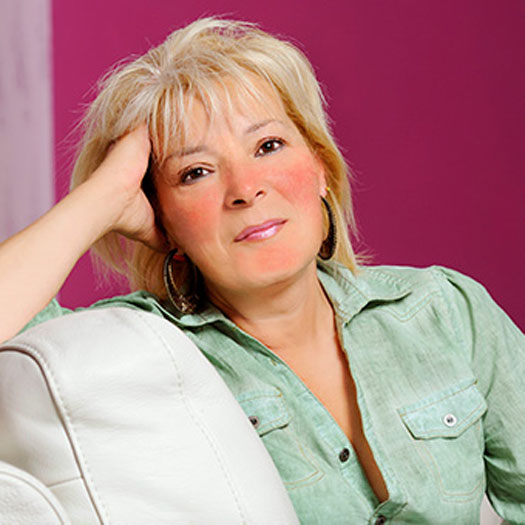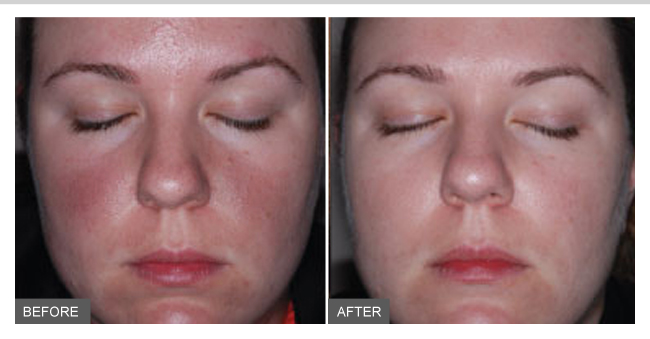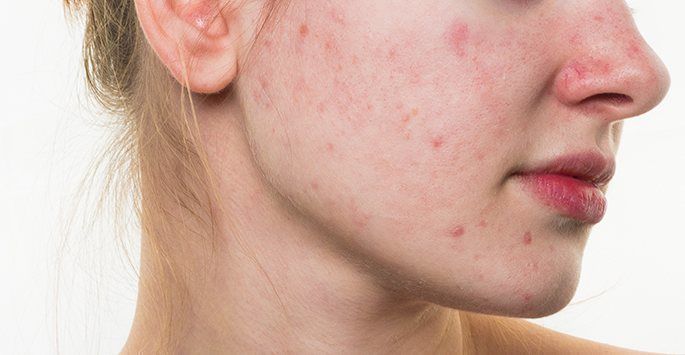A common and chronic skin disease, Rosacea is an acne-like benign inflammatory skin disease that affects adults, mostly female aged 30-50 years. It is often confused with acne, allergic reactions or skin problems. Rhinophyma is a severe condition of rosacea which results in an enlarged nose. In the 14th century, this condition was described in the Canterbury Tales.
Know about the subtypes, symptoms, causes, diagnosis, and treatment of rosacea.
Subtypes Of Rosacea

Rosacea has four subtypes and each has its own symptoms. An individual can possibly have more than one subtype at a time.
1. Erythematotelangiectatic rosacea (ETR): It is associated with facial redness, flushing and visible blood vessels.
2. Papulopustular (or acne) rosacea: It is often associated with acne-like breakouts and usually middle-aged women are affected.
3. Rhinophyma: It is a rare form of rosacea and is associated with thickening of the nose skin. Mostly affecting the men, it is usually accompanied by another form of rosacea.
4. Ocular rosacea: This form of rosacea affects the eye area.
Signs & Symptoms In Different Forms Of Rosacea

Facial redness, pustules, papules, small and superficial dilated blood vessels on facial skin and swelling are some of the common signs and symptoms of rosacea.
And as mentioned earlier, rosacea symptoms vary according to the form of rosacea one is affected with.
1. ETR
-
Sensitive skin
-
Dry, rough, and scaly skin
-
Stinging and burning skin
-
Visible broken blood vessels
-
kin swelling
-
Flushing and redness toward the center of the face
2. Acne Rosacea
-
Acne-like breakouts and deep red skin
-
Oiliness in skin
-
Elevated skin patches
-
Sensitive skin
-
Visible broken blood vessels
3. Rhinophyma
-
Thickened nose skin
-
Visible broken blood vessels
-
Thickened skin on chin, forehead, cheeks, and ears
-
Bumpy skin texture
-
Enlarged pores
4. Ocular Rosacea
-
Burning or stinging sensation in the eyes
-
Cysts on eyes
-
Eyes that are sensitive to light
-
Diminished vision
-
Bloodshot and watery eyes
-
Gritty-feeling eyes
-
Dry, itchy eyes
-
Broken blood vessels on eyelids
Risk Factors & Causes Of Rosacea

The causes of rosacea remain unknown but they may be caused due to both environmental and hereditary factors. Poor hygiene doesn't cause rosacea. Here are the risk factors and that can trigger or worsen rosacea by increasing blood flow to skin’s surface:
-
Consuming alcoholic beverages
-
A skin mite demodex and its bacterium
-
Intestinal bacteria Helicobacter pylori
-
Wind or sunlight
-
Cosmetics
-
Eating spicy foods and consuming hot drinks
-
Temperature extremes
-
Emotional stress
-
Presence of cathelicidin
-
Exercise
-
Hot baths and showers
-
Drugs dilating blood vessels, including some blood pressure medications
Diagnosis

No particular test for diagnosing rosacea is known. The health care professionals usually depend on the history of symptoms and a physical examination of skin. In certain cases, the doctor may ask a patient to take tests in order to rule out other conditions like psoriasis, acne, eczema and lupus. When eyes are affected in rosacea, doctor may recommend consulting an eye specialist (ophthalmologist).
Treating Rosacea Through Medicines, Therapies & Home Remedies

Depending on the signs and symptoms that the sufferer experiences, the doctor prescribes different medications. Applied as a gel on the skin, the drug brimonidine (Mirvaso) is effective in rosacea and reduces redness by constricting blood vessels. Regular application of the medication is necessary as the effect on blood vessels is temporary. The effect can be seen within 12 hours.
Azelaic acid and metronidazole are the topical products that help in reducing redness and pimples of mild rosacea. These drugs show improvements after 3-6 weeks. The oral antibiotics help in reducing some types of bacteria but mainly counter inflammation when consumed for this particular disease.
Doxycycline is an antibiotic pill used for treating moderate to severe rosacea with bumps and pustules. Isotretinoin is a powerful oral acne drug that is also helpful in clearing up acne-like lesions of rosacea (not recommended during pregnancy).
Laser therapy also helps in reducing redness of enlarged blood vessels. Dermabrasion, intense pulsed light therapy and electrosurgery help treat visible blood vessels and changes due to rhinophyma.
Home remedies of rosacea include using a broad-spectrum sunscreen with SPF of 30 or more, non-soap cleanser and moisturizer, applying green-tinted makeup before a light liquid foundation or a light dusting of green-tinted facial powder.
Image Source:
1) beautyhealthtips
2) dermatologyflorida
3) scarletohara
4) vekzhivu
5) mdcosmedicalsolutions

